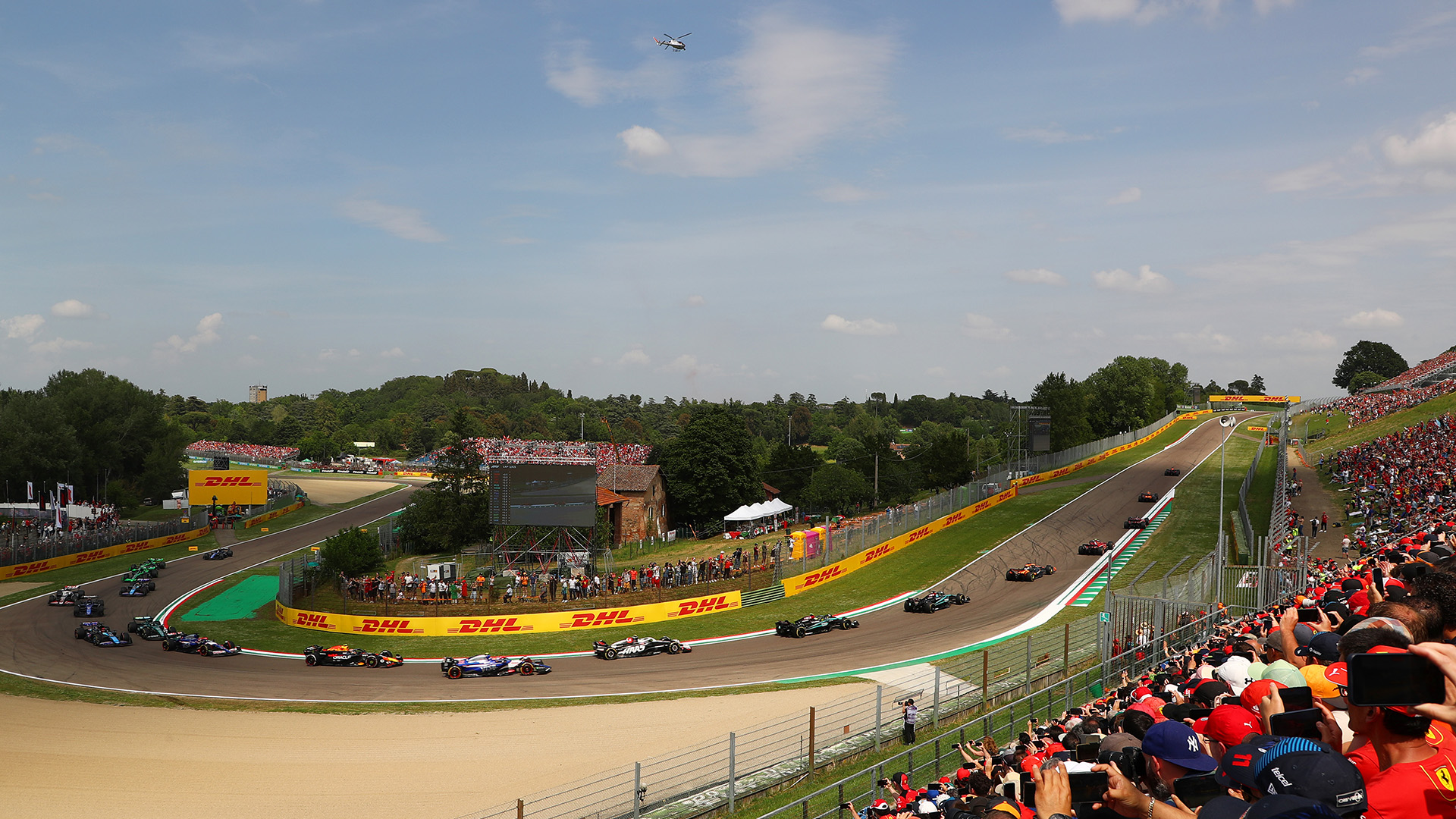La FORMULA 1® es la máxima categoría del deporte motor, es la más poderosa, costosa, y la que cuenta con mayor tecnología dentro del mundo del automovilismo, está regulada por la Federación Internacional del Automovilismo (FIA).
Los autos utilizados son monoplazas sin techo cobertor que pertenecen a las 10 diferentes escuderías que participan en el campeonato, cada una de ellas cuenta con dos pilotos a su cargo.
La FORMULA 1® se corre todos los años desde 1950 y cada campeonato tiene una cantidad de carreras limitadas.
Este año el campeonato está compuesto por 19 carreras y México ocupará el lugar número 17 dentro del calendario.
| 1. | Gran Premio de Australia |
| 2. | Gran Premio de Malasia |
| 3. | Gran Premio de China |
| 4. | Gran Premio de Bahréin |
| 5. | Gran Premio de España |
| 6. | Gran Premio de Mónaco |
| 7. | Gran Premio de Canadá |
| 8. | Gran Premio de Austria |
| 9. | Gran Premio Gran Bretaña |
| 10. | Gran Premio Hungría |
| 11. | Gran Premio Bélgica |
| 12. | Gran Premio de Italia |
| 13. | Gran Premio de Singapur |
| 14. | Gran Premio de Japón |
| 15. | Gran Premio de Rusia |
| 16. | Gran Premio de Estados Unidos |
| 17. | Gran Premio de México |
| 18. | Gran Premio de Brasil |
| 19. | Gran Premio de Abu Dabi |
La FORMULA 1 otorga puntos en todas las carreras del año que componen el calendario. Los puntos se distribuyen de la siguiente manera:
| 1er lugar | 25 puntos |
| 2ndo lugar | 18 puntos |
| 3er lugar | 15 puntos |
| 4to lugar | 12 puntos |
| 5to lugar | 10 puntos |
| 6to lugar | 8 puntos |
| 7mo lugar | 6 puntos |
| 8vo lugar | 4 puntos |
| 9no lugar | 2 puntos |
| 10o lugar | 1 punto |
Cada carrera está compuesta por tres sesiones de práctica, una de calificación y la carrera final. Las primeras dos sesiones de prácticas (viernes) tienen una duración de 90 minutos, mientras que la tercera (sábado) se desarrolla en 60 minutos.
La calificación de los pilotos se realiza los sábados y consiste en tres etapas:
Q1: Los pilotos tienen 18 minutos para completar las vueltas en el menor tiempo posible, tras finalizar este tiempo los cinco pilotos más lentos son eliminados y colocados en las últimas cinco posiciones de la parrilla de inicio.
Q2: Para esta etapa se resetean los tiempos de todos los pilotos restantes y en una sesión de 15 minutos intentan asegurar un espacio dentro del top 10. Nuevamente los cinco autos más lentos son eliminados y colocados de la posición 11 a la 15 de la parrilla de inicio.
Q3: Para esta última etapa de calificación, los tiempos se resetean nuevamente y los pilotos tienen 12 minutos para lograr sus mejores tiempos y pelear por la pole position (1er lugar en la parrilla de inicio), además de las nueve posiciones restantes.
La carrera, que se lleva a cabo los domingos en las distintas sedes del campeonato, no puede durar más de dos horas, únicamente puede sobrepasar este periodo de tiempo si hay una bandera roja que detenga la carrera por un accidente o si la pista no se encuentra en condiciones óptimas. En dado caso, la carrera no podrá exceder las cuatro horas.
Horarios para el FORMULA 1 GRAN PREMIO DE MÉXICO 2015®
Prácticas
Viernes: 10:00 y 14:00 hrs.
Sábado: 10:00 hrs.
Calificación
Sábado: 13:00 hrs.
Carrera
Domingo: 13:00 hrs.
Tipos de banderas que se utilizan en FORMULA 1
Lenguaje FORMULA 1
· Boxes: Garajes de las escuderías.
· Cockpit: Espacio del piloto dentro del auto.
· Drive-through: Sanción que obliga al piloto a pasar por los pits sin detenerse.
· Graining: Se refiere a la degradación de los neumáticos.
· Grip: Adherencia del coche al asfalto. El que haya un mayor graining significa un menor grip.
· Hospitality: La zona de cada equipo en el circuito, aquí comen y se relajan los pilotos.
· Paddock: Es la zona en la que se colocan todos los hospitalities.
· Pit-lane: Es el carril donde están los boxes de los equipos.
· Pit-wall: Muro que separa el carril de boxes de la pista.
· Stop and go: Sanción que obliga al piloto a parar unos segundos en el pit-lane.
· Warm up: Vuelta de calentamiento que dan los pilotos antes de iniciar la carrera.
No te pierdas de todo esto y mucho más en el FORMULA 1 GRAN PREMIO DE MÉXICO 2015, los días 30, 31 de octubre y 1° de noviembre en el renovado Autódromo Hermanos Rodríguez.










